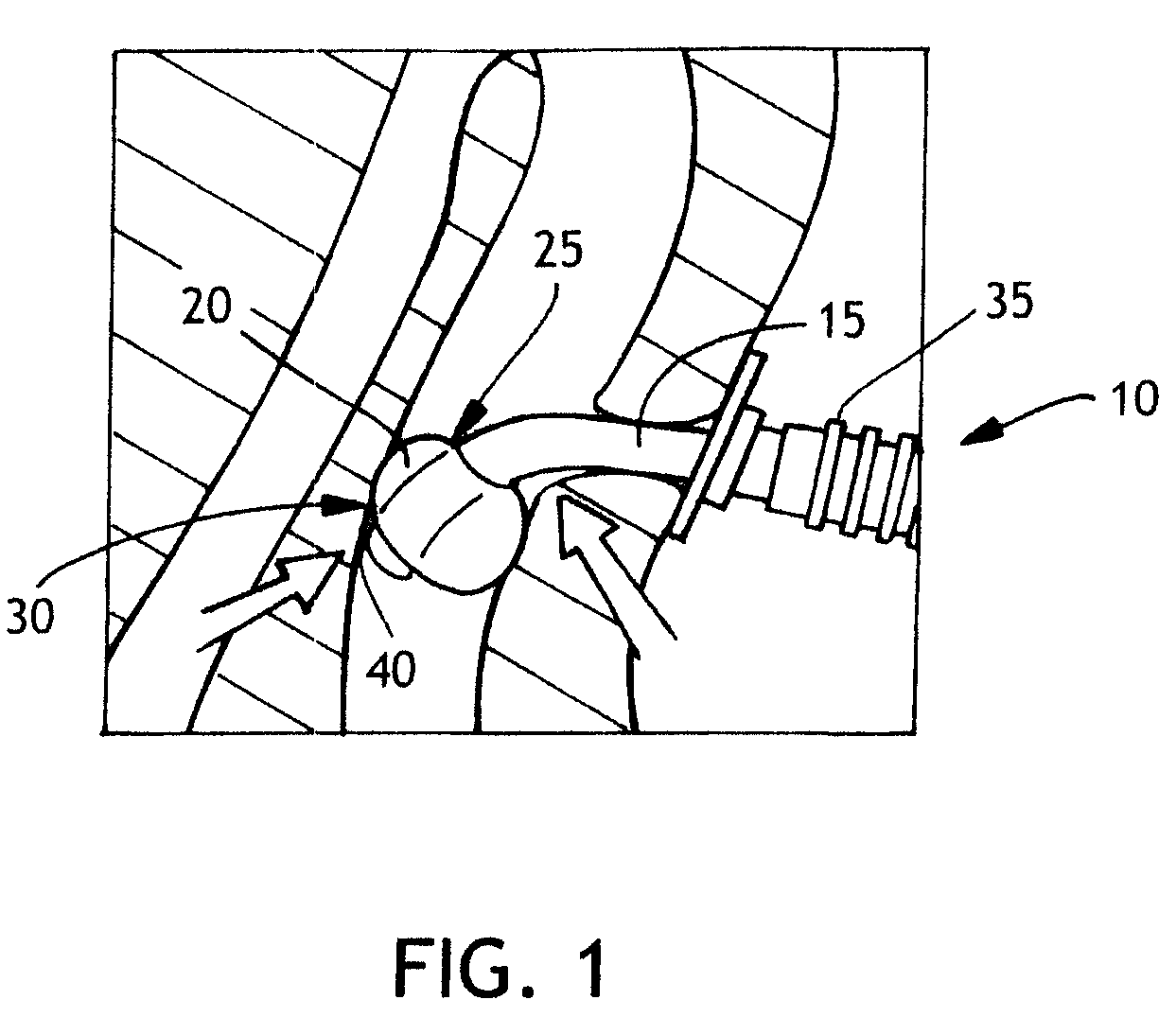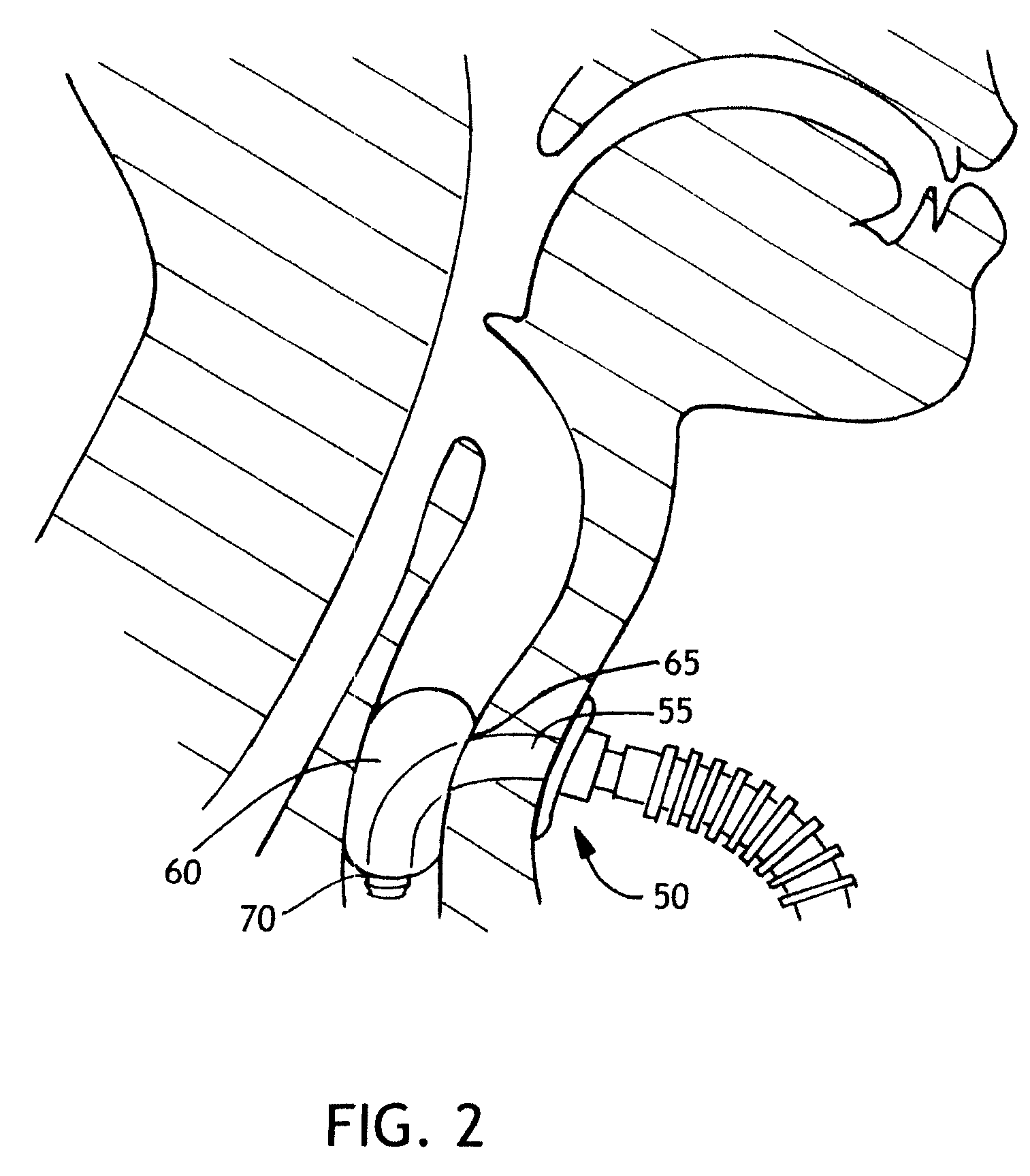Balloon cuff tracheostomy tube
a tracheostomy tube and balloon cuff technology, which is applied in the field of balloon cuff tracheostomy tube, can solve the problems of large inflammation and generation of secretions from the tissues surrounding the tube, unable to fully recover, and the conventional tracheostomy tube is generally not well anchored within the body
- Summary
- Abstract
- Description
- Claims
- Application Information
AI Technical Summary
Benefits of technology
Problems solved by technology
Method used
Image
Examples
Embodiment Construction
[0029]Conventional tracheostomy tubes are inserted through a stoma in the throat that has been dilated in order to receive the trach tube. Their “anchoring” or the controlled location of the tube within the trachea remains a concern with these known tubes. FIG. 1 is an illustration of such a conventional cuffed tracheostomy tube 10 composed of a tube 15 and an inflatable cuff 20. In this configuration, the cuff 20 is centered on the tube 15 at the proximal point of attachment 25 and the distal point of attachment 30 and these points of attachment located on the tube 15 are contiguous or at an angle of approximately 180 degrees.
[0030]In FIG. 1 illustration, the balloon is deformed as a result of compressive forces on the inflated balloon. These compressive forces may be caused by the weight of the ventilator tubing 35 or by movement of the patient that presses the ventilator tubing against an obstacle, or by other causes. These compressive forces may cause the distal tip 40 of the tr...
PUM
 Login to View More
Login to View More Abstract
Description
Claims
Application Information
 Login to View More
Login to View More - R&D
- Intellectual Property
- Life Sciences
- Materials
- Tech Scout
- Unparalleled Data Quality
- Higher Quality Content
- 60% Fewer Hallucinations
Browse by: Latest US Patents, China's latest patents, Technical Efficacy Thesaurus, Application Domain, Technology Topic, Popular Technical Reports.
© 2025 PatSnap. All rights reserved.Legal|Privacy policy|Modern Slavery Act Transparency Statement|Sitemap|About US| Contact US: help@patsnap.com



